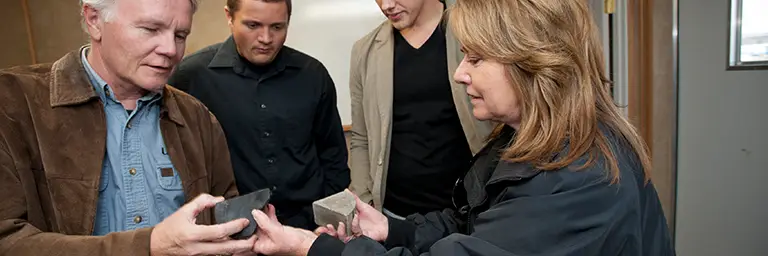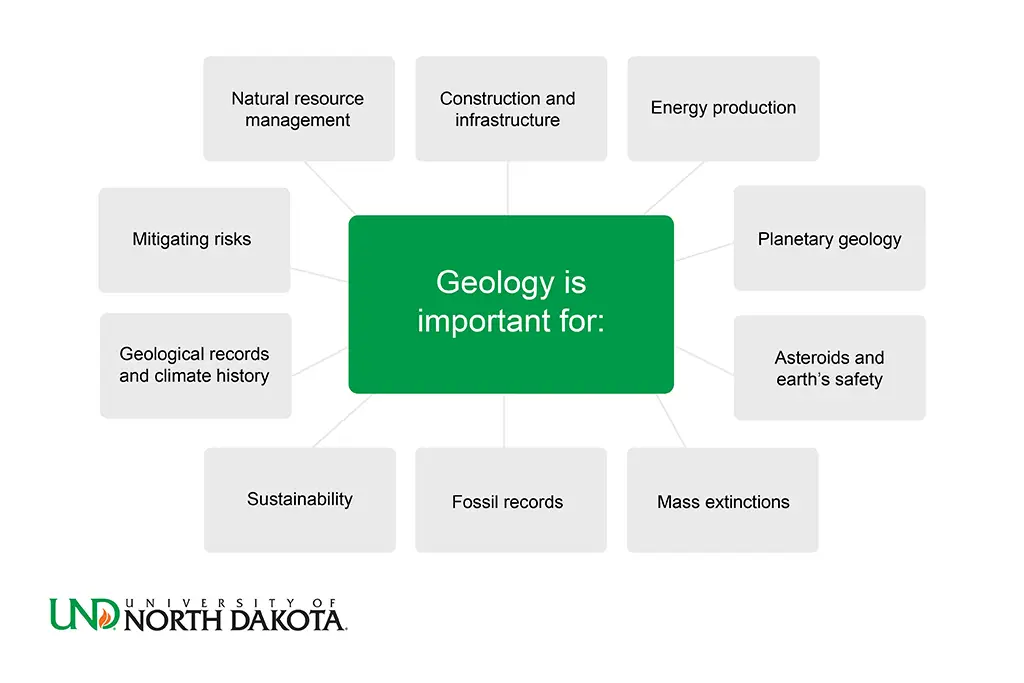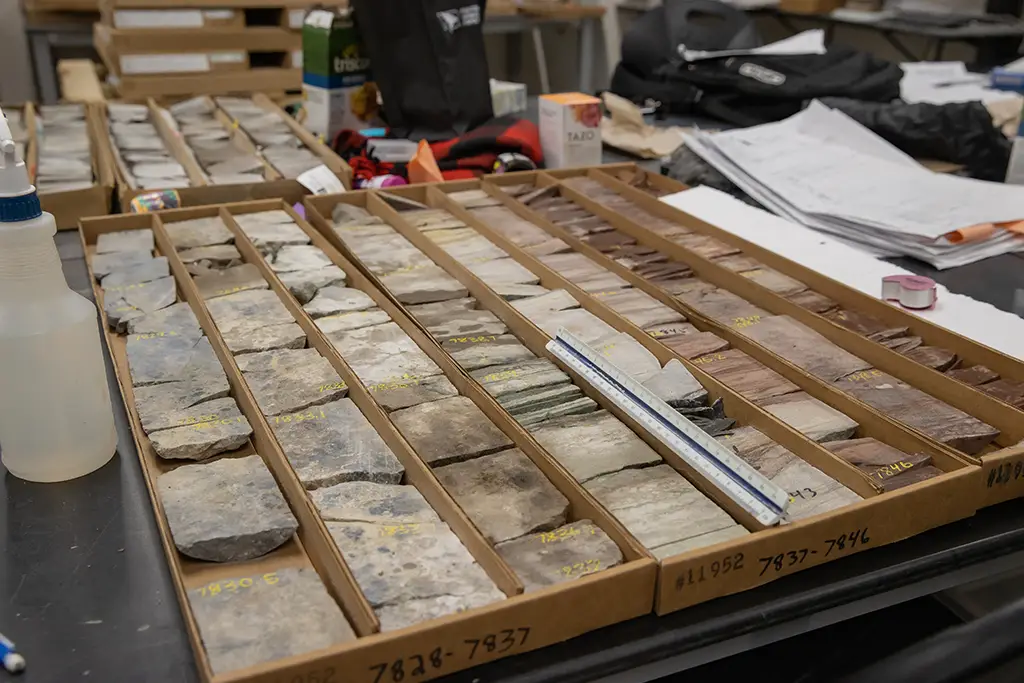
Why is Geology Important for Our Planet?
Geology is important because it helps us understand the Earth's history, predict natural disasters, manage natural resources, and address environmental challenges like climate change.
Request Information
Many people mistakenly reduce geology to a simple science of digging up rocks and fossils, the kind you see neatly displayed in museums. But the real story lies not so much in what geologists uncover as in what they do with these discoveries.
The fossils and rocks they study are like pieces of a larger puzzle. Through them, experts can help predict natural disasters, uncover new energy resources, and understand climate shifts.
So, why is geology important? Well, geology findings guide decisions across different areas, and most importantly, they help us better understand the Earth and how we can safeguard our future.
The Importance of Geology Across Vital Fields
The importance of geology extends across many essential areas. It influences, in one way or another, everything from environmental conservation to energy production.

Natural Resource Management
All ecosystems rely on geological features, such as rock formations, soils, and waterways. These features determine the availability of essential resources like minerals, fossil fuels, and groundwater. For instance, soil types, influenced by geological processes, affect plant growth, which, in turn, sustains animal life and entire ecosystems.
It is practically impossible to manage resources or anticipate issues like soil erosion and groundwater depletion that can jeopardize ecosystems without the utilization of geology.
Construction and Infrastructure
Geology also influences the planning, design, and safety of various structures. Before any construction begins, a thorough understanding of the site's geological conditions is crucial. Engineers need to assess factors such as the type of soil or rock, the stability of the ground, and the presence of groundwater.
Hard rocks may require drilling and blasting, while softer soils can be dug more easily, with slope stability being a major concern, especially for roads and tunnels. Proper assessment of factors like slope angle, water presence, and rock discontinuities is essential in order to prevent landslides and collapses. Foundations are similarly affected by geology, with engineers choosing appropriate types, such as footings or piles, to avoid ground movements that could damage structures.
Energy Production
Geology also affects energy production by helping manage natural resources for energy. The exploration of fossil fuels, for instance, relies heavily on geological surveys to understand the composition and structure of the Earth's subsurface. Geologists study rock formations and sedimentary basins to locate oil and gas reserves, which are critical to the global energy supply.
In addition to fossil fuels, geology is crucial for renewable energy sources. For example, geothermal energy production directly depends on the Earth's internal heat, requiring geological expertise to locate and manage geothermal reservoirs. Geologists also contribute to the development of hydroelectric power, as understanding rock formations and groundwater systems helps in the design and construction of dams and reservoirs.
Mitigating Risks
Geology provides much-needed insights into the mechanisms behind earthquakes, volcanic eruptions, and other disasters, helping to predict and even mitigate their impacts. Though it's not possible to foresee for sure that an earthquake will happen, we can still calculate the probability that an earthquake can occur in a specific area within a certain number of years. Studies of fault lines, tectonic plate movement, land formations, and soil compositions help geologists identify areas prone to hazards, allowing for the development of hazard maps and early-warning systems.
For example, the U.S. Geological Survey (USGS) uses data from seismographs and satellite observations to monitor and predict earthquake patterns, reducing risks in earthquake-prone areas. Similarly, monitoring volcanic activity, such as that of Mount St. Helens, has improved forecasting models, which can save lives by allowing for timely evacuations.
Geological Records and Climate History
The geological record provides a deep-time view of Earth's climate changes. Layers of rock, ice cores, and sediment deposits contain preserved evidence of past atmospheric conditions, such as greenhouse gas concentrations, temperature fluctuations, and sea levels. By studying these layers, geologists can identify patterns of warming and cooling, providing crucial insights into natural climate cycles and extreme events like ice ages or mass extinctions.
Such a deep-time perspective is invaluable for scientists trying to predict future climate trends, as it helps differentiate between natural climate variability and human-driven changes. In addition, understanding these patterns assists in the development of environmental policies that provide a scientific foundation for addressing modern climate challenges.
Sustainability
By providing the aforementioned knowledge needed to manage Earth's resources and mitigate environmental impacts, geology also helps with sustainability. Joel C. Gill and Martin Smith, experts in geoscience and sustainable development, highlight in their book Geosciences and the Sustainable Development Goals that geoscientists and their work are essential in areas like water management, resource extraction, and hazard mitigation, all central to achieving sustainability.
Sustainability is not just a goal, it is a requirement for long-term habitability of our planet.Geosciences and the Sustainable Development GoalsJoel C. Gill and Martin Smith
Furthermore, geology contributes to sustainability by helping society understand and adapt to climate change. As stated by Gill and Smith, geoscientific research "feeds into understanding environmental changes and how human activities influence those changes," which is essential for creating effective climate policies.

Fossil Records
Fossil records are important for understanding the history of life on Earth, as they preserve evidence of past organisms and environments. They help scientists trace the evolutionary development of species, particularly in identifying transitional forms that reveal evolutionary paths.
For example, the fossil record of Tiktaalik provides a bridge between fish and tetrapods, demonstrating a critical phase in vertebrate evolution.
At UND, geology research is significantly advancing in this area. Paul Ullmann's course, Geology 112: Discovering Dinosaurs, introduces students to paleontology and help them explore the fascinating world of prehistoric life.
Mass Extinctions
The study of mass extinctions aids with understanding Earth's biological and geological history. Research shows that geological evidence, particularly rock strata and fossil records, can help pinpoint the causes of various events, such as volcanic activity or asteroid impacts.
The Cretaceous-Paleogene (K-Pg) extinction, caused by a massive asteroid impact 66 million years ago, is well-documented through geological research, with evidence such as the presence of iridium layers in rock strata. Geologists analyze Earth layers and associated fossils to identify the sequence of events that led to mass extinctions.
Planetary Geology
Planetary geology is the study of using remote sensing techniques, such as telescopes and spacecraft, to explore the wonders of space beyond Earth. Scientists use these tools to determine planetary makeup, star evolution, and the fabric of the universe itself.
The National Aeronautics and Space Administration (NASA) and other space agencies around the world have conducted many missions to celestial bodies. The most recent Mars rover mission, Perseverance, was launched with the goal of finding evidence of liquid water on the planet’s surface. The mission was a success; evidence of an ancient lake environment and a river delta in Jezero Crater were found. Another important mission is the upcoming Artemis program, which will send man to the moon for the first time in over 50 years!
UND's Harold Hamm School of Geology & Geological Engineering will soon be offering a Planetary Geology track, including classes such as Introduction to Planetary Geology, Advanced Planetary Geology, and Investigations into Planetary Geoscience.
Asteroids and Earth's Safety
Geologists also play a huge role in assessing the risks posed by near-Earth objects (NEOs) and developing strategies to mitigate their potential impact on Earth. Through research into past asteroid collisions, such as the one that caused the aforementioned Cretaceous-Paleogene extinction, scientists have gained insights into the catastrophic effects of such impacts.
To prevent future disasters, space agencies have launched a series of flight missions targeting NEOs, gathering data on their geological and chemical compositions. These missions include NASA's Near-Earth Asteroid Rendezvous-Shoemaker, which made history by landing on an asteroid in 2001, as well as Japan's Hayabusa and Hayabusa 2 missions and ESA's Rosetta. The Double Asteroid Redirection Test (DART) mission, conducted by NASA, is particularly groundbreaking, as it aims to test the feasibility of deflecting asteroids to protect Earth from future impacts.
Conclusion
For anyone interested in knowing more about our planet, its past and future, geology provides endless opportunities to make a real impact. At UND, you can explore this exciting field with our bachelor's in Geology, master's in Geology, and even a Ph.D. program in Geology.
Whether you're passionate about exploring ancient fossils or protecting Earth from space threats, UND will help you find your calling. So, get ready to dig into something that truly matters and set your future in stone.
FAQs
It depends on the role you want to pursue. Generally, you need at least a bachelor's degree in Geology, though advanced roles in research or academia may require a master's or Ph.D.
With a geology degree, you can work in various fields, including environmental consulting, natural resource management, oil and gas exploration, mining, or even as a geological researcher or educator.